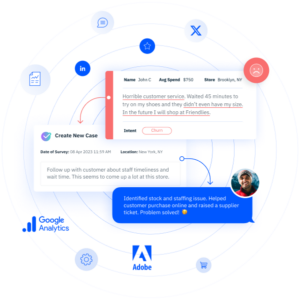5 Steps To Realizing Your Experience Program’s Goals

The road to true Experience Improvement (XI) is rarely a straightforward one. There are many ways to take the journey, as countless companies have discovered over the last 10-15 years, but only experience improvement produces the type of customer connections and employee passion that turns companies from followers to true leaders within their verticals.
I talked about realizing experience program goals and success in a recent POV, but I think it’s time to talk briefly about how companies get there. What are steps brands take to get to realizing their goals, and how can they ensure that realization truly means transformational success? Our framework is designed to help companies get there, and it consists of five steps:
- Design
- Listen
- Understand
- Transform
- Realize
Step #1: Design
I’ve seen a lot of brands kick their experience programs off by turning listening posts on and then forming goals around whatever feedback they can find. It’s much more effective, though, to come at this step in the opposite direction: brands should first design their goals, then turn listening posts on. Defining what you want to do with your experience program before you begin it is much more effective (and a lot less messy) than the inverse.
So, what business challenges do you want your experience program to help solve for? Are you looking to boost customer retention, or lower the cost to serve? Maybe you want to cross-sell or upsell to your existing customer base. Whatever your goal, lay it out at the beginning of your program process and describe it in terms of specific numbers. Goals like “retain more customers” are too vague; design your initiative with percentages and financial goals, and ascertaining how successful it’s been will largely take care of itself.
Step #2: Listen
Another big component of designing your program is deciding which audiences to listen to. This is a more targeted approach than attempting to intercept feedback from all sides and can garner you intel pertinent to your specific goals. Once you’ve completed the legwork of deciding who you want to listen to, that’s when you should turn your listening posts on and start gathering feedback. All told, being selective about who you listen to will make realizing program goals easier.
Step #3: Understand
After you’ve gathered a sufficient amount of feedback, it’s time to roll up your sleeves and delve into what your customers, non-customers, or other audience groups are saying. There are several ways to go about this process—utilizing an experience improvement platform that can analyze sentiments and thus commonalities within your feedback is one of the most effective. Finding the common threads within your feedback will make you aware of what customers (or other groups) are saying, what they like, and most importantly, what needs fixing.
Step #4: Transform
Transforming your business means applying what you’ve learned from gathered feedback. It means identifying processes and potential problem areas, then working with the relevant stakeholders to come up with solutions. Brands should always desilo their experience data as a matter of course, but working directly with relevant departments is crucial to actually seeing change occur where it needs to. This is not an easy process by any means, but this collaboration is the best way to guarantee that meaningful transformation occurs.
Step #5: Realize
After this, the final step of our framework, realize, can take place as experience teams and practitioners see changes take place and goals hopefully get reached. What more is there to the process, though?
Click here to read my full POV on the subject, where I explain how brands like yours can best realize their experience goals and make a difference for themselves, their customers, and their employees.




